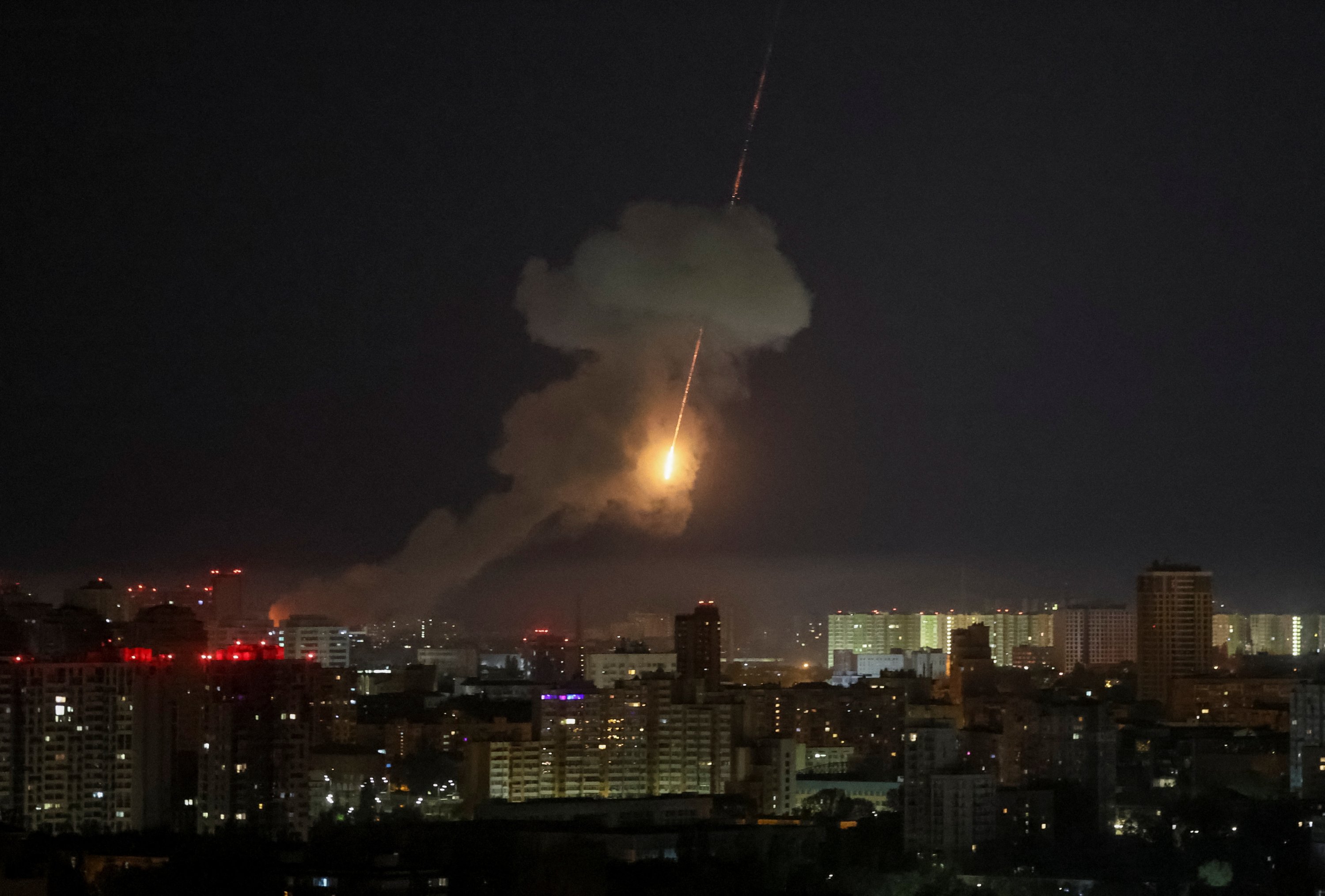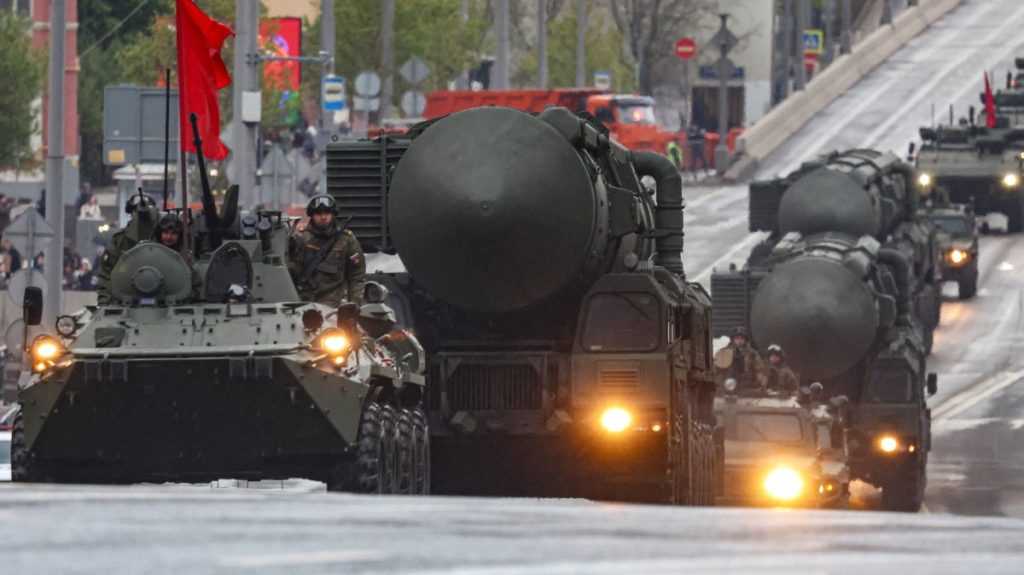In the background of the war in Ukraine, a major shift is taking place in global military thinking. Ballistic missiles, once used only by powerful countries as a last-resort warning, are now being used regularly in battles, political messaging and international conflicts. From Ukraine to the Middle East, the rise of long-range, accurate missiles is not only making wars more intense but also weakening the balance that nuclear weapons once helped to maintain.
The war in Ukraine clearly shows how missile warfare is changing. With the help of U.S.-made ATACMS and U.K.-French Storm Shadow missiles, Ukraine has reached a new level in its ability to strike. These weapons allow Ukrainian forces to hit deep inside Russian-held areas, attacking supply centers, airfields and command sites. These aren’t theoretical threats – they are real attacks that are changing how Russia plans and responds. In return, Russia has used its new Oreshnik missile, a medium-range ballistic missile with hypersonic features, said to be able to avoid Western missile defenses. This back-and-forth shows that missiles are no longer just tools of theory – they are now actively used to send messages and shape events.
What’s most concerning is not just the power of these weapons, but what they represent. Both sides are now using advanced missiles in ways that blur the line between regular battlefield tools and weapons that signal a bigger, more serious threat. These missiles are now both offensive and defensive – they are used to hit targets and also to scare opponents from striking back. The psychological effect is huge: cities that once felt safe because they were far away are now in danger; important facilities that were once off-limits are now targets.
New patterns in missile use
The war in Ukraine has confirmed several key trends that have already been mentioned in reports like the 2020 NASIC threat review – trends that now shape today’s battles.
First, missiles are often used, not just held back for rare or extreme situations. Countries now use them for pressure and to gain an edge in battles. Second, mobility and hiding are now key to survival. Launchers that can move on roads, missiles hidden underground or disguised in normal-looking trucks – used by Russia, Iran and North Korea – make it harder to find and stop these threats. Third, many new missiles now come with smart guidance systems, multiple warheads (MIRVs), tricky flight paths and decoys. These upgrades make them harder to block using systems like THAAD, Patriot or Iron Dome, which were built for simpler threats.
Most importantly, missile technology is spreading. Once only available to top military powers, now many middle-level countries and even armed groups have access to these weapons. This means more missiles in more hands – making the world less stable and more dangerous.
Sign of future warfare
Ukraine is more than a battlefield – it’s a sign of future wars. It shows how upcoming conflicts might look: fast-moving, long-range, highly accurate and full of advanced tech. Ukraine’s ability to damage Russia’s logistics and military leadership using ATACMS and Storm Shadow missiles proves that regular (non-nuclear) missiles can now achieve the kinds of results once only possible with full air control or nuclear threats.
This change is shaking up how we think about deterrence. It used to be believed that only nuclear weapons could stop major attacks or set boundaries. But now, Russia’s use of the Oreshnik missile – with its possible hypersonic speed and multiple warheads – is a clear sign that Moscow wants to show it still has the upper hand in escalation. Russian President Vladimir Putin’s confirmation of the missile’s use was both a response to Ukraine and a warning to NATO: Russia is ready and able to use its best missile technologies.
These changes aren’t just happening in Ukraine. In the Middle East, Iran’s support of proxy groups like Hezbollah and the Houthis has helped those groups build large and advanced missile arsenals. Many of these missiles have smart targeting systems and powerful warheads, allowing them to challenge strong defenses in Israel and the Gulf states.
In 2023, missile attacks from Gaza and southern Lebanon pushed Israel’s Iron Dome system to its limits. Meanwhile, the Houthis launched strikes on oil facilities in Saudi Arabia and the UAE, showing how such weapons can hurt the global economy. These groups don’t need nuclear arms – their growing missile power is enough to threaten key military and economic sites. What we’re seeing in Ukraine is also happening here: more conventional missile attacks, used for pressure and retaliation, are becoming common. This is a worldwide shift toward missile-based power.

Wider impact: Changing rules
The regular use of ballistic missiles in many conflicts is having serious effects on international peace and policy.
First, it weakens existing arms control systems. Agreements like the New START Treaty don’t cover new types of missiles, such as hypersonics or advanced weapons like Oreshnik. The Missile Technology Control Regime (MTCR) has no strong ways to stop non-state groups. And no global agreement really limits the use of precision-guided regular missiles or MIRVs with conventional warheads.
Second, it is fueling regional arms races. After the Ukraine conflict worsened, countries like Poland, Finland and Japan began building or buying more missile systems. In response to Russia’s new missile types, the U.S. and its allies are now rushing to develop laser weapons, satellites for early warning and AI systems to detect launches faster.
Third, it increases the danger of misunderstandings and overreactions. Each missile strike could be seen as a major threat, and when missile defenses fail, countries have less time and space to solve problems diplomatically. A single strike from Ukraine, Israel, or a militant group could be wrongly seen as a bigger attack, causing a fast and possibly bigger response. This could easily start a wider war by mistake.
A world shaped by missiles
We are moving into a time where the first move in war is no longer soldiers on the ground or a formal diplomatic warning – but a missile fired from far away. Ukraine has shown that precision missiles can do what once required bombers or nuclear weapons: stop supply chains, destroy leadership centers and change the course of war. Russia’s use of Oreshnik is not just about Ukraine – it sends a signal to Europe, the U.S., and other players.
This new reality brings two big challenges. First, the world’s institutions must rethink how we track, control and talk about these weapons to avoid major crises. Second, military defenses need to improve – not just to stop large missile waves but also targeted attacks meant to shut down power, communication, or command systems.
The last century was shaped by the threat of nuclear destruction. This century may be shaped by a different kind of danger – the spread of accurate, fast missiles that can be used more easily and more often. Unless the world responds with smart diplomacy and stronger cooperation, the next war may not be avoided through fear – but started by confidence in who can strike first.


